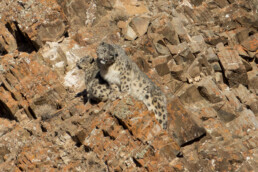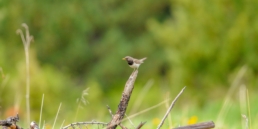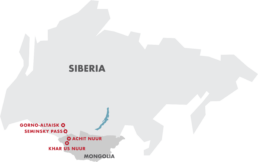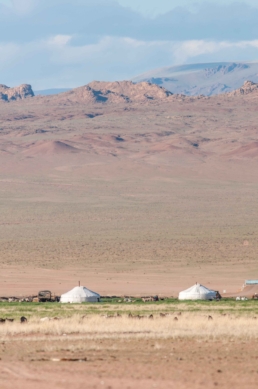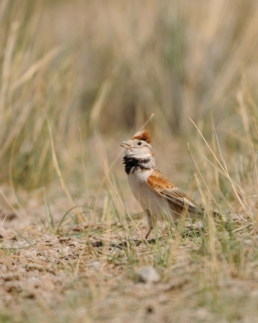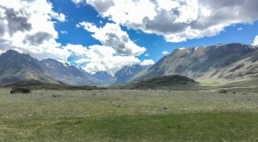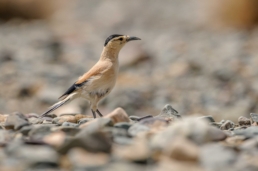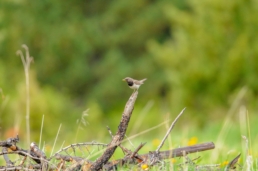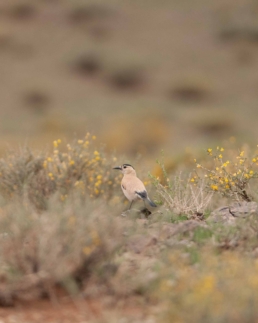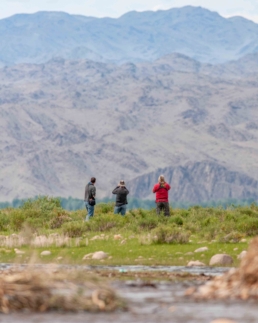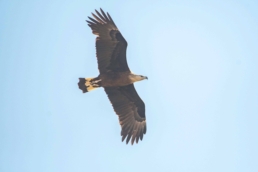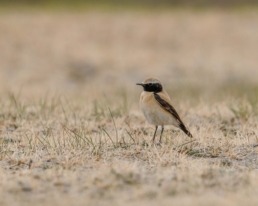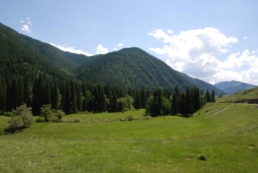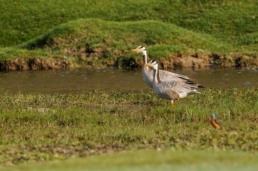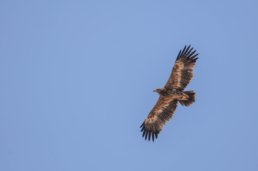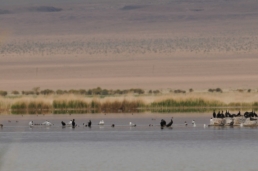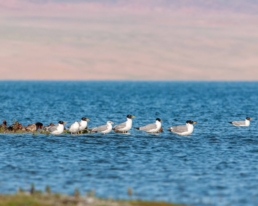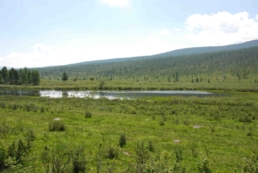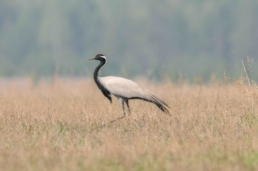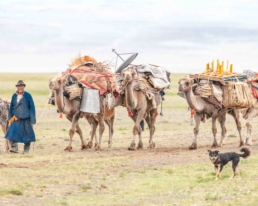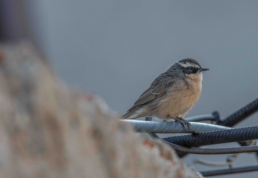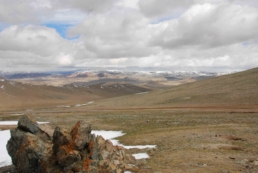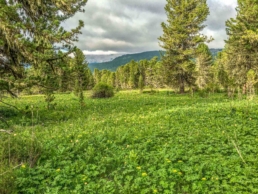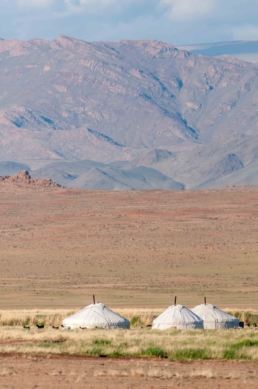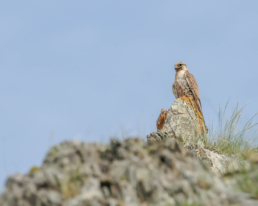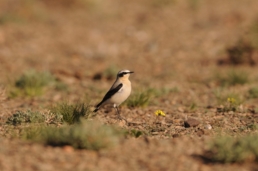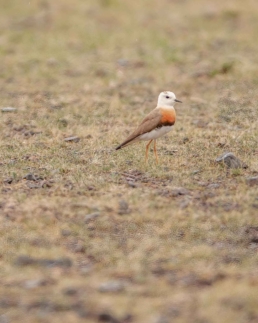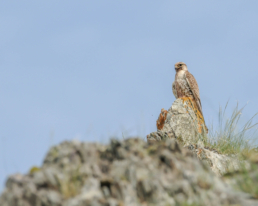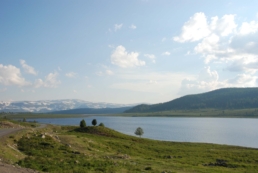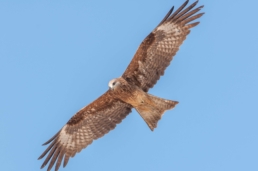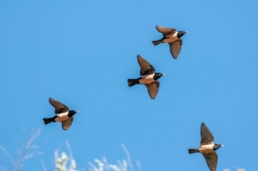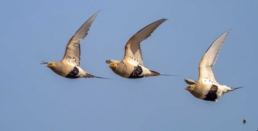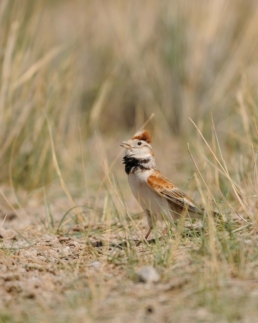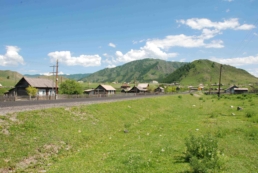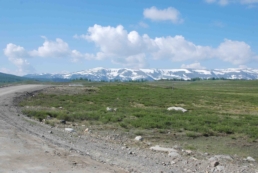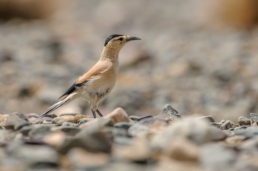Your Russia itinerary
Day 1: To Gorno-Altaisk
The tour starts with an international flight from your home city to the capital of Russia, Moscow, followed by a domestic flight bringing you to the small provincial town of Gorno-Altaisk.
Night: On aircraft
Day 2: Gorno-Altaisk to Seminskiy Pass
After arriving early morning at the Gorno-Altaisk Airport, you will meet up with your RBT tour leader who will accompany you for the duration of this excellent birdwatching holiday. We leave Barnaul and take a long drive along the Chuy Highway to the Seminsky Pass (195 km). Seminsky Pass is the highest point on the Chuy Highway, reaching 1,717 metres above sea level. After arrival, we will undertake an afternoon excursion to the slopes of Mount Vershiina Tiyakhtii. We will likely come across some of the commoner species of the Siberian boreal coniferous forest, such as Ural Owl, Spotted Nutcracker, brandtii Common Jay, Eversmann’s Redstart, Willow Tit, sayanus Siberian Tit, Crested-honey Buzzard, Swinhoe’s and Pin-tailed Snipes, Olive-backed Pipit, Altai Accentor, Black-throated Accentor, Hume’s and Dusky Warblers, Pallas’s Grasshopper Warbler, Red-flanked Bluetail and many lovely Black-throated Thrushes. The big target bird for Seminsky is one of the most illustrious rosefinches of Asia – the Pallas’s Rosefinch!
Night: Wooden lodges at Seminsky
Day 3: Seminsky Pass
We start with some early birding before breakfast at Seminsky, where we hope to see more of the previously mentioned species. After breakfast, we will depart towards the Tiid-Tujariik Valley, located in the Chuya Steppe. Birding en route, we will be on the lookout for Hill Pigeon, Pale Sand Martin, Rosy Starling, Daurian Jackdaw, Isabelline Wheatear, Eastern Goldfinch, Godlewski’s Bunting, Siberian Meadow Bunting, Saker, and the gorgeous Demoiselle Crane. We will drive over the Chicke-Taman Pass (1,295 m), with a stop at the observation point. Here we may hear the fantastic song of the Siberian Blue Robin. Other sightings could include more Red-flanked Bluetail and Dusky warblers. Along the road, we will see several high cliffs inhabited by Eurasian Crag Martins and Lesser Kestrels. In the village Aqtash, we will make a stop for our permits to visit the border zones with Mongolia. To quote Dostoevsky, “you get nowhere in Russia without documents”. We will undoubtedly make additional stops along the way as we spot raptors perching on telegraph poles (lots of Imperial and Steppe Eagles, Saker and Peregrine Falcons). In the evening we will arrive at our yurt camp near the Tiid-Tujariik River.
Night: Yurt camp at Tujariik
Day 4: Beltir
Today we have a long drive through the Chuya Steppe to the ruins at Beltir, and then upwards into the mountains. Along the road, we will make stops at several spots to watch Booted and Barred Warblers, Greater Sand Plovers, Red-billed Choughs, Pied and Isabelline Wheatears, Horned and Greater Short-toed larks, Rock Petronias, Pere David’s Snowfinches, and Desert Wheatears. Lunch will be served in the fields near a colony of wise Pere David’s Snowfinches. The village of Beltir is all but abandoned, the result of a disruptive earthquake in 2003, meaning many of the empty barns and houses have become inhabited by birds. This area is an excellent place for Eastern Black Redstart, Brown Accentor, Pied Wheatear, Twite, and Red–billed Chough. Our destination in the mountains is situated at an altitude of 2,205 metres, which is 260 metres higher than Beltir. Target birds in this area are White-winged Snowfinch, Brown and Altai Accentors, Golden Eagle, and Upland Buzzard. Today in the steppe areas we may also encounter Black Stork, Demoiselle Crane, Steppe Eagle, Imperial Eagle, Isabelline Shrike, Brown Shrike, Rosy Starling, Daurian Jackdaw, Alpine Chough, Pallas’ Sandgrouse, Horned Lark, Richard’s Pipit, and unreal Mongolian Finches.
Night: Yurt camp at Tujariik
Day 5: Tabozhok, in search of Altai Snowcocks
From dawn, we will begin to scan our surroundings for the ground jay. In this area, we may also see big flocks of Pallas’s Sandgrouse, Daurian Partridge, Greater Short-toed Lark, Barred Warbler, Isabelline- and Brown Shrikes, Rock Petronias, and Mongolian Finches. The unique habitat here is reflected in the avifauna we encounter. After breakfast (and hopefully excellent views of the ground jay!), we continue the drive to Lake Achit-Nuur. Here, in the swampy areas, overwhelming amounts of waders and ducks can be found breeding. The most interesting among them is arguably the stunning red Asian Dowitcher and elegant Long-toed Stint. Here we are also in search of the mighty Pallas’s Sea Eagle, Little Crake, Pallas’s Gull, and Lesser Short-toed Lark. One side of the lake is covered with colossal reed beds which are surrounded by rocky hills. Here we will make our camp for the night. Our neighbours could be Savi’s Warbler, Paddyfield Warblers, Great Reed Warblers, halimodendri Lesser Whitethroats, Bearded Reedlings, Thick-billed Reed Buntings, Pallas’s Reed Buntings and Grey-necked Buntings – better than any five-star hotel!
Night: Tent camp at Achit-Nuur
Day 6: Tujariik to Kindiiktiikul
Today we will transfer to the high-altitude Lake Kindiiktiikul. Before our morning departure, we will scour a bushy area near the Tujariik River, and scan the swampy plains near Kosh-Agach. Here we can usually find Long-tailed Rosefinches, Azure Tits, Taiga Flycatcher, Yellow-browed Warbler and Blyth’s Reed Warbler. The translation of Kindiiktiikul in the Altai language means ‘lake with the navel’, a small island in the lake’s centre is the reason for this. It serves as a safe nesting site for Mongolian Gulls and Willow Grouses. At the lake, we may find Whooper Swans, Arctic Loons, Bar-headed Goose, White-winged Scoters, Red-breasted Mergansers, Yellow-billed Choughs, Horned Larks, and Citrine Wagtails. Along the road near the lake, several raptors are possible, including Lammergeyer, Black Vulture, Golden and Steppe Eagles, but also flocks of Pallas’s Sandgrouse. After arriving at the lake, we will do some final birding nearby, while our crew sets up our tented camp ready for the evening.
Night: Tent camp at Kindiiktiikul
Day 7: Nariin-Gol Valley
Today we have a great walk planned along the Nariin-Gol River to the three lakes situated near the Bogutii Mountain Range. Our focus for the day is finches: Plain Mountain Finch, Brandt’s Mountain Finch, Asian Rosy-Finch, and kobsensis Spotted Great Rosefinch. We may also come across Rock Ptarmigan, Siberian Stonechat, Sulfur-bellied Warbler, Blyth’s Pipit, Himalayan Accentor, Brown Accentor, Güldenstädt’s Redstart, and more Twite. Even Altai Snowcock is possible here. In the evening we will return to our camp and spend our last night on Russian soil before moving to Mongolia.
Night: Tent camp at Kindiiktiikul
Day 8: Border crossing to Mongolia
Today we need to do our best to depart from Kindiiktiikul as early as possible to reach the border before the queue. Even if we arrive promptly, the estimated time to cross the border is nearly 7 hours! As such, there is not much time for birding today. However, while waiting for our turn, we can do some birding near the border which could yield several common species such as Red-billed Choughs, Little Ringed Plovers, Hill Pigeons, Brown Accentors, Northern-, Pied- and Isabelline Wheatears, and some raptors. After crossing into Mongolia, we will head east towards Achit-Nuur. We will spend our first night camping in the semi-desert. These plains are the perfect habitat for the illustrious Mongolian Ground Jay, and the next morning will be entirely devoted to finding this unique bird.
Night: Tent camp near Achit-Nuur.
Day 9: Turkestan Ground Jay and Achit-Nuur
From dawn, we will begin to scan our surroundings for the ground jay. In this area, we may also see big flocks of Pallas’s Sandgrouse, Daurian Partridge, Greater Short-toed Lark, Barred Warbler, Isabelline- and Brown Shrikes, Rock Petronias, and Mongolian Finches. The unique habitat here is reflected in the avifauna we encounter. After breakfast (and hopefully excellent views of the ground jay!), we continue the drive to Lake Achit-Nuur. Here, in the swampy areas, overwhelming amounts of waders and ducks can be found breeding. The most interesting among them is arguably the stunning red Asian Dowitcher and elegant Long-toed Stint. Here we are also in search of the mighty Pallas’s Sea Eagle, Little Crake, Pallas’s Gull, and Lesser Short-toed Lark. One side of the lake is covered with colossal reed beds which are surrounded by rocky hills. Here we will make our camp for the night. Our neighbours could be Savi’s Warbler, Paddyfield Warblers, Great Reed Warblers, halimodendri Lesser Whitethroats, Bearded Reedlings, Thick-billed Reed Buntings, Pallas’s Reed Buntings and Grey-necked Buntings – better than any five-star hotel!
Night: Tent camp at Achit-Nuur
Day 10: Achit-Nuur to Khar-Us-Nuur
After some early birding at the lake, we will have a field breakfast before continuing on our journey. Today we have 200 km of bad road to overcome and a crossing of the Shovergol River, before finally arriving in the evening at our destination on the shore of Lake Khar-Us-Nuur. “Khar-Us” in Mongolian means “black water”. The dark colouring of the lake water is due to the presence of organic compounds and high levels of plankton. As a result, the lake is abundant with fish. We will bird several small, but gorgeous lakes abundant with waterfowl such as grebes, egrets and herons, swans, ducks, and avocets, en route. We will arrive at Khar-Us-Nuur Lake in the early evening. Here we may find our first Mongolian Larks!
Night: Tent camp at Khar-Us-Nuur
Days 11: Round trip from Khar-Us-Nuur to nearby saline lake
We start the day birding the nearby hills looking for Asian Desert Warblers, Isabelline Shrikes, Desert Wheatears, and the famous Kozlov’s Accentor. Closer to the water, we can see Greater- and Lesser Sand Plovers, Terek Sandpipers and more Asian Dowitchers. On the lake itself, Swan Goose, Bar-headed Goose, White-winged Scoter, and the rare Relict Gull may be observed foraging. Large numbers of Pacific Swift and Rose-coloured Starlings are regularly observed in this area. Another big target is conveniently located a short distance from our camp – the dazzling Oriental Plover! In this perfect steppe habitat, we may encounter more Upland Buzzards, Kentish Plovers, Lesser Sand Plovers, Long-Toed Stints, Pallas’s and Relict Gulls, Pallas’s Sandgrouse, big flocks of Demoiselle Cranes, and even Henderson’s Ground Jays. After birding at the salt lake, we will drive back to our camp at Khar-Us-Nuur.
Night: Tent camp at Khar-Us-Nuur
Day 12: Khar-Us-Nuur to Tsagaan-Nuur
Today will be a day of driving as we head back towards the Mongolian-Russian border. If we make good time today, we should reach Lake Tsagaan-Nuur, which is the closest lake to the border. Here we could see an Arctic Loon, a Whooper Swan, a variety of ducks, a Terek Sandpiper and a Red-headed Bunting.
Night: Tent camp at Tsagaan-Nuur
Day 13: Border crossing to Russia
Today we must undertake the border crossing once again. The plan will be to line up at customs as early as possible, however, it could still take up to 7 hours to cross. Once back in Russia, we will return to the good old “Tujariik” yurt camping. Before dinner, there is the option to rest up or visit a lovely Poplar grove nearby for some birding. The famous Russian sauna is waiting for us after dinner – the perfect way to relax after a long day.
Night: Yurt camp at Tujariik
Day 14: Aqtash Village
Today we will be searching for any species we have so far missed. Another option will be to do some birding near Uzunkyol Lake and Katu-Jariik Pass where Booted Eagle, Siberian Thrush, Red-throated Thrush, and the mysterious Siberian Jay are all possible.
Night: Wooden lodges near Aqtash
Day 15: Return to Seminsky
Today we transfer back to the Seminsky Pass. Our route will be the same as the one we took to get to the Chuya Steppe. On the way back we can spend more time birding at Beliy Bom looking again for Godlewski’s-, Meadow- and Pine Buntings, Pied Wheatear, Siberian Stonechat, and Goldfinches of the subulata race. A short walk at the Chicke-Taman Pass for Red-flanked Bluetail, Siberian Blue Robin, Oriental Cuckoo, Greenish-, Hume’s- and Blyth’s Reed Warblers, is also on the cards. During the drive expect to see loads of raptors such as Lesser Kestrels, Upland Buzzards, Imperial- and Steppe Eagles and Saker Falcons. There should also be enough time for an afternoon birding session in the coniferous forest on the slopes of Tiyakhtii Mountain at Seminsky. Here we can go after species like Pallas’s Rosefinch once more.
Night: Wooden lodges at Seminsky
Day 16: Seminsky to Gorno-Altaisk
Today will sadly be the last of our fantastic birdwatching adventure. After an early morning departure from Seminsky Pass, and 2-3 hours on the road, we should reach the city of Gorno-Altaisk in the late afternoon. We will enjoy a grand final dinner before spending our last night in Mother Russia.
Night: Comfortable tourist hotel
Day 17: Departure for Home
In the morning we will depart for the Gorno-Altaisk Airport where we say our farewells and depart for home.
Night: On aircraft
Tour information
Focus
- Taiga Birding
- Steppe Birding
- Unique Landscapes
Group size
Min 6 - Max 10
The group will be led by one birding leader and one culture guide at all times.
What's included in the Price?
All transport. All accommodations are in twin rooming. All meals. All permits and national park entrances. Please note: Drinks, tips, possible visas and items of a personal nature including travel insurance, are not included.
Accomodation
Russia and Mongolia are vast, sparsely populated countries, meaning that tourism accommodations are limited outside of the capitals and major cities. During the Russia portion of our trip, we will stay primarily in basic guesthouses or small hotels. In Mongolia, we’ll travel with our own tented camp, allowing us the flexibility to adapt to weather and birding conditions. The camp will be equipped with kitchen facilities and staff to cater to our needs, though shower and WC facilities will be shared. For a touch of comfort, we’ll stay at a well-appointed tourism hotel in Barnaul, offering a pleasant contrast to the rustic accommodations experienced throughout most of the tour.
Difficulty
During our expeditions, we may embark on long journeys, some of which may traverse poor or unpaved roads. These extensive travels highlight the vastness and adventure of the region. We will be using sturdy 4WD Landcruiser vehicles throughout the tour, ensuring reliable transportation across the varied terrain. Our drives will take us to moderate heights, from where we will embark on shorter walks, sometimes uphill for extended periods. There will also be ample time for private excursions or walks around the tented camp, allowing participants to comfortably explore the stunning landscapes and natural wonders of Mongolia at their own pace.
Flights
International flights are not included in the pricing. Please connect with the RBT office to find out your best connection to Mongolia.
Clothing - What to pack?
For our expedition to Russia and Mongolia, it’s important to pack a variety of clothing to accommodate the diverse climates and activities we’ll encounter. Lightweight, easily washable, and quick-drying clothes are essential for the hot steppe and desert regions. Don’t forget to bring sunglasses and a sun hat for protection from the sun. However, it’s also crucial to pack some lightweight yet warm layered clothing for higher altitudes and early morning excursions, where temperatures can drop significantly. This should include a warm hat, fleece, and light gloves to keep you cozy. Additionally, a light waterproof jacket is recommended to shield against unexpected rain showers.
When it comes to footwear, choose light yet sturdy walking boots that can handle various terrains. It’s advisable to avoid shorts to protect yourself from the sun and respect the region’s more conservative dress customs. While people in the cities may dress more casually in western clothing, dressing modestly is still a good idea.
Mammal Bonanza
The initial focus of this venture takes us to eastern Mongolia, where we search for the sought-after Pallas’s Cat. The combination of its stocky posture and dense, long fur makes it appear stout and ritzy. This small cat inhabits the grasslands and montane steppe of Central Asia where it preys on small mammals like gerbils, pikas and voles. In the middle of the steppe, we have located a burrow where we will position ourselves in the afternoons to wait for it to appear. Here where the horizon has no end, we search for further delights like Daurian Pika, Mongolian Gerbil and Saiga Antelope. Colourful birdinclude the smallest crane on the planet; Demoiselle Crane and the eccentric-looking Mongolian Ground Jay.
Our next focus takes us to the west of the country, we will head to the picturesque Altay Mountains, a range that continues into neighboring Kazakhstan and Russia. This is the realm of the Snow Leopard. Around a decade ago the Snow Leopard was considered a ghost, seen only by scientists who spent most of the year in the mountains inhabited by these beautiful creatures. They are only seen reliably in a few places and Mongolian Altay are considered the best of all. As the Altay Mountains are not a particularly high range, the conditions in which we search for this enigmatic species are comfortable and doable for all. During the pleasant fall weather, we have good hopes of finding this cat – our sighting ratio from previous tours is 80%. Alongside this majestic cat, expect to come across packs of wolves, the unusual Northern Three-toed Jerboa and Saiga Antelopes. The birdlife here is outstanding with nine species of warblers, White-headed Ducks, Altai Snowcocks and Saker Falcons to mention a few possibilities.
We end the tour with a short visit to the Khustain Nuruu National Park where the once-extirpated Przewalski’s Horse has reclaimed the steppe. Mongolian Gazelles and Chinese Penduline-Tits are also found here, alongside attractive Brown Shrike and Mongolian Lark.
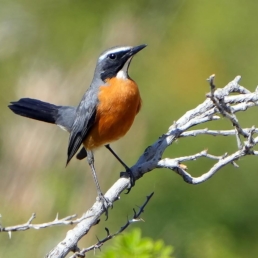
Related tours
Birding the Far East
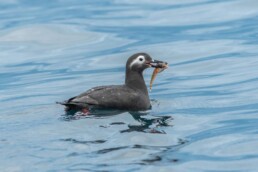
Ornithological expedition to Lake Baikal
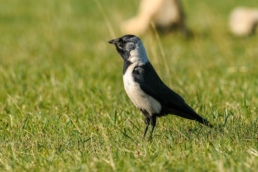
An expedition to the Indigirka Delta for Ross’s Gull & more
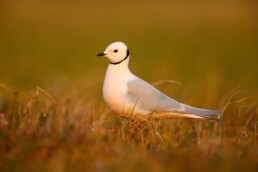
An adventurous expedition for Snow Leopard & Pallas’s Cat
